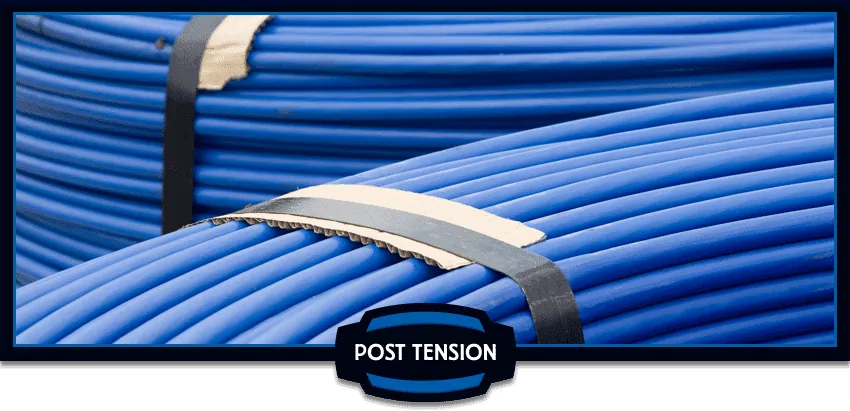What Are Post Tension Cables and What Are Their Benefits?
Post-tension cables are used in concrete construction to add strength to thin and long slabs. This allows for longer spans between support columns. The cables have steel wires within the plastic sheath. They are tensioned after pouring concrete.Post-tension ‘tendon’ is a term used to define the complete assembly comprising of the sheath, pre-stressing strand, anchorages, corrosion-inhibiting coating, or any grout around the steel wire or bar.
How Post-Tensioning Works?
Post-tensioning cable involves reinforcing concrete using high-strength steel strands. The steel strands are commonly called ‘tendons’. It is used in a wide range of concrete structures including:
• Apartment buildings
• Office buildings
• Slabs-on-ground
• Water tanks
• Bridges
It allows the construction of structures that would otherwise be impossible.
Contractors need to locate cables when repairing structures. It is important to avoid hitting the cables when cutting or drilling for renovation. These cables have very high tension and cutting them can also compromise the structure’s integrity.
Applications of Post-Tensioning Cables
Today, concrete-tensioning cables are used in most aspects of construction. When it comes to buildings, it allows structures and features like fewer beams, longer clear spans, more slender elements, and thinner slabs. This further helps in reducing the amount of concrete required for construction. It can also help in reducing overall building height without affecting the floor height.
Using cables thus helps significantly reduce the building’s weight. There will be a lesser load on the foundation. Lower building weight and height can further contribute to more savings in terms of facade and mechanical system costs.
Benefits of Tensioning
When there is permanent stress and elongation in the post-tension cables, a compressive force is created on the concrete. This compression helps in countering the tensile forces due to load. Thus, the load-carrying capacity of your concrete structure increases significantly when this system is used.
Concrete-tension cables also allow the slabs and beams to be continuous. Thus, a single beam can be run from one end to the other instead of having to place a beam between all the columns. Thus, this unique system not only helps to increase the structure’s strength, it also increases overall efficiency.
Types of Post-Tensioning
Post-tensioning cable is of two main types – unbonded and bonded. In unbonded post-tensioning, there is no bond between the pre-stressing steel and the concrete surrounding it anywhere except at the anchorages. Monostrand tendons are the most commonly used unbonded post-tension tendons. They are used within beams and slabs. The tendons have multiple strands coated with corrosion-inhibiting grease in an encasing of extruded plastic sheath.
Benefits of Unbonded Tendons
Unbonded tendons are usually prefabricated at the plant before moving onsite for installation, especially for slab-on-ground and building construction. The tendons are laid out based on the installation drawings and then concrete is poured to the desired strength. Tension is then applied to the tendons and they are anchored. The anchorages prevent the tendons from returning to their original length.
Thus, post-tension cables add more strength to your buildings, help save concrete, reduce weight, and increase efficiency. Visit Condo Management Company Calgary for more information.

